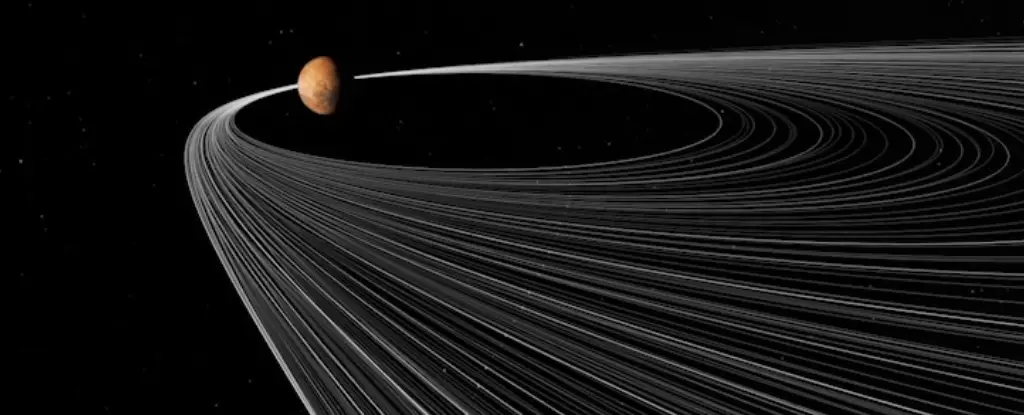The intrigue surrounding the moons of Mars, Deimos and Phobos, presents a captivating chapter in our understanding of the Solar System. Unlike Earth, which boasts a singular moon born from a massive collision, the origins of Mars’ two moons remain shrouded in uncertainty. Through extensive research and computer simulations, scientists have advanced several hypotheses regarding their genesis, yet the true narrative remains elusive. This article explores current theories about the Martian moons and their implications for the history of our planetary neighbors.
The Collision Hypothesis: A Near-Doppelgänger of Earth’s Moon
One prominent theory regarding the formation of Celestial bodies pivots around collision events. Earth’s Moon is thought to have formed from debris scattered by the collision between Earth and Theia, a Mars-sized protoplanet. Could a similar event have taken place on Mars? The collision hypothesis suggests that an asteroid or a comet impacted Mars, enabling fragments to coalesce into the moons we see today. The proposed impactor would have been significantly smaller than the one that formed the Moon, creating enough debris for the eventual formation of Deimos and Phobos.
This model provides an intriguing explanation for Phobos’s closer orbit, but it raises questions about its feasibility. Mars, being substantially smaller than Earth, has a weaker gravitational pull, casting doubts on its ability to capture such substantial lunar bodies in the first place. This leads to the question: How could a small planet manage to hold onto multiple moons? In light of this, scientists have needed to look beyond just the impact theory to explain the Martian moons’ origins.
Another theory gaining traction posits that Deimos and Phobos were initially asteroids, captured by Mars’ gravity during its early formation. Observations have shown that these moons bear a striking resemblance to small asteroids, which could lend credence to this hypothesis. However, this notion becomes problematic when considering Mars’s gravity. Unlike larger terrestrial planets such as Earth and Venus, which have no moons despite their stronger gravitational allure, Mars faces a paradox.
The concern is that due to its relatively low mass and weaker gravitational force, capturing even one asteroid would be challenging, much less two. Moreover, asteroids that are captured by a planet typically exhibit more eccentric orbits rather than the neatly circular paths observed with Deimos and Phobos. These irregularities in orbit challenge the viability of the capture model as the sole explanation.
Recently, a novel model has emerged that seeks to reconcile the discrepancies between both previous hypotheses. This model suggests that rather than a catastrophic collision or a straightforward capture, the Martian moons could have originated from a close encounter with a large asteroid. This near miss would generate significant tidal forces, serving to fragment the asteroid into a ring of debris, which could subsequently be captured into orbit around Mars.
Computer simulations support this proposal, revealing that the fragments would initially have more elliptical orbits that might change over time. As these fragments drift in response to gravitational influences from the Sun and other bodies, some would eventually collide, creating a subsequent ring of debris that could give rise to the circular orbits of Phobos and Deimos. This innovative approach effectively melds the collision and capture models, offering a more cohesive narrative to explain the origin of Mars’ two moons.
The Road Ahead: Anticipation Surrounding Future Missions
To conclusively unravel the mysteries surrounding Phobos and Deimos, empirical evidence is essential. Future exploration missions hold promise in shedding light on their origins. The Mars Moons eXploration (MMX) mission, set to launch in 2026, aims to gather samples from Phobos that will enable scientists to investigate the lunar bodies more closely. Analyzing these samples could provide critical insights into their composition and formation, ultimately shedding light on the larger questions surrounding Martian and planetary evolution.
While we have developed a range of theories regarding the origins of Mars’ moons, uncertainty lingers. The collision, capture, and tidal disruption hypotheses all contribute valuable perspectives to the discourse, illustrating the complexities involved in unraveling celestial formation. With upcoming missions in the pipeline, we are on the cusp of potentially transformative discoveries that could greatly enhance our understanding of not only the Martian moons but also the broader dynamics of our Solar System.


Leave a Reply